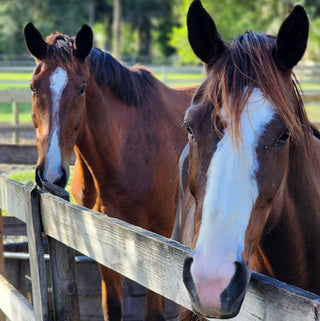Over the past decade, horse owners have been hard hit by price increases on grain and hay, caused by fluctuations due to various factors such as weather conditions, crop yields, transportation costs, and demand.
In general, hay prices tend to be influenced by factors such as the amount of rainfall and the cost of production, while grain prices can be influenced by factors such as commodity prices, fuel costs, and government policies. For example, during periods of drought, hay crops may be reduced, resulting in higher hay prices, while during periods of surplus, hay prices may be lower. Similarly, changes in fuel prices can impact the cost of transportation and affect the price of grain.
Dr. Worth has 3 tips on how to stretch your budget:
(1) Feed your hay in a net or rubber tub so it doesn't get trampled by your horse.
(2) Feed your horse grains only if necessary. For pasture pets and overweight horses, try a balancer pellet like LinPro in lieu of grain. This will ensure the horse will receive his daily nutrients and minerals without adding calories to the diet. For horses in moderate work that need additional fat into the diet, consider feeding a lower-cost option like beet pulp or flaxseed oil.
(3) Look for generic nutrients such as feeding whole flax seed rather than expensive oil supplements. Generic products are those that are equivalent to a brand name product in terms of quality, safety, and efficacy, but are sold under a different name and usually at a lower price. In other words, generic products are a less expensive alternative to their brand name counterparts.
Remember, when it comes to horse nutrition, quality should never be compromised for cost. It's important to choose a balanced diet that meets your horse's nutritional needs and to consult with a veterinarian or equine nutritionist if you have questions.

